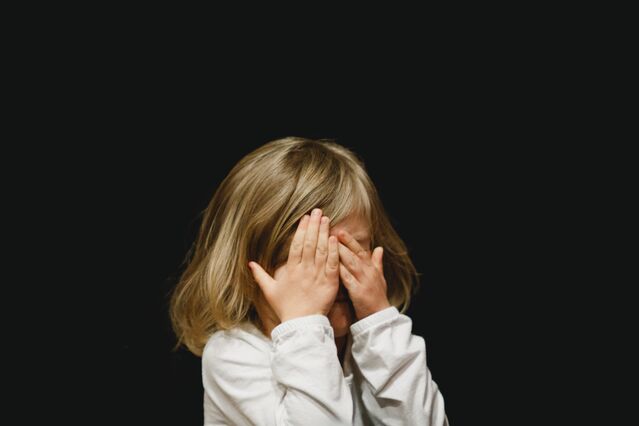Anxiety
Are Active Shooter Drills Traumatizing Your Child?
Drills lead to increasing anxiety and self-medicating behaviors among children.
Posted November 20, 2022 Reviewed by Kaja Perina
Key points
- Anxiety, stress, and depression in school age children increased by 39–42% in recent years.
- The American Academy of Pediatrics (AAP) now recommends screening for substance use in children, starting at nine years of age.
By Patricia A. O’Gorman, Ph.D., co-chair of the Medical and Addictions working group of the COVID-19 Psychology Task Force (est. by 14 divisions of the American Psychological Association), which sponsors this blog.
Research is finding that it is not just COVID-19 and school lockdowns that are leading to increased anxiety and self-medicating in youth, but active shooter drills are also prime contributors.
Our kids are increasingly anxious and are dealing with this by self-medicating, fueling the addiction epidemic. Marijuana (classified as a mild hallucinogen) and other hallucinogens are on a dramatic rise. One result is that the American Academy of Pediatrics (AAP) now recommends screening for substance use in children, starting at nine years of age.
Just as we are beginning to understand the mental health issues of our children caused by COVID-19 and the ensuing lockdowns, another driver of anxiety and resultant substance abuse is being identified: Active shooter drills.

Active shooter drills are increasing anxiety in children
In some school districts, children do not know if it is a drill—in essence, a scary practice but a known practice just the same—or if it is real but just a perceived threat or maybe a real one, or if there is an active shooter in the school. Some districts mandate that parents be notified in advance that a drill will take place.
Some drills are as realistic as they can be made, meaning police in tactile gear arrive with ambulances and blood supplies. And the drills are long, sometimes lasting for hours.
A recent study looking at the broad and lasting impact of these drills on the well-being of school communities found that anxiety, stress, and depression increased by 39–42% following the drills.
Let’s explore why this is the case.
Drills force kids to live in two realities simultaneously
Our youth need to deny that this is real, telling themselves it is just a drill, that when it’s over, they can get back to the things they love in school—recreation, play practice, or their science lab. They tell themselves to deny the sounds they hear are real, that the directions they are being given by their teachers have meaning and are necessary.
Another common reaction is that children feel they need to get ready to die, and they know death could come at any moment. For any human, this results in a high state of anxiety. While our combat veterans may be trained for this, our children should not be.
During drills, most kids flip back and forth between these two realities—it’s real, it’s not real. This process teaches them to plan and not feel—exhausting in and of itself and potentially damaging psychologically.
Active shooter drills require kids to act and grieve at the same time
Kids are hidden in closets; they barricade doors and try to stay away from windows. Yes, there may be a plan for what they should do, but implementing the plan—not knowing if it is real or not, not knowing if you, or your best friend, the teacher you love, or your sister or brother will be shot—is as overwhelming for a six- or ten-year-old child or a teenager as it would be for any adult.
And in these moments, many consider how sad their parents will be if they are the next victim, as they’ve seen in Parkland, Uvalde, and Sandy Hook. They begin to miss their parents and grieve losing them. Producing this grief reaction in children is not helpful to them. And yet this is part of what we are producing in our youth.

Kids are developing their own solutions to the possibility of being killed in school
Kids deal with active shooter drills in different ways. Some call their parents and leave a verbal will stating who should receive their most prized possessions. Some use drugs, secreted in their backpacks, to take the edge off if they need it.
In a recent episode of This American Life titled “This Is Not A Drill,” youth shared their plans for dealing with an active shooter. One-fourth grader spoke of loading his backpack full of books every day so that if he’s shot, the books will help save him. A high schooler spoke of noticing a loose ceiling in the band room that leads to areas in the ceiling that are good hiding places. He shared this with his friends. Others considered if they should rush the shooter even if it meant being killed themselves so they could save their friends.
Our youth are now required to make momentous decisions to save their lives and those of people they care about.
Kids are still anxious after the drills
Being told it was “just a drill” or that the “shooter” was captured or killed does not necessarily alleviate the trauma these drills represent for children.
Many of them remain nervous long after the drill is over, and according to a research study, the drills even prompted extreme reactions such as panic attacks and “downright fear” in response to other unrelated, innocuous situations such as “a fire alarm going off.” These are descriptions of a trauma response.
Solutions for decreasing anxiety during active shooter drills
Researchers, working with gun safety groups, are proposing ways of decreasing the trauma of such drills, including:
- notifying school communities in advance;
- avoiding realistic simulations;
- ensuring developmental appropriateness;
- consulting with mental health professionals;
- and tracking data on their efficacy and effects.
We need to include making schools safer physically
Of course, there is also another alternative: Making schools safer physically.
Yes, this would involve additional budget allocations. But if we do not use our tax dollars to protect the mental health as well as the physical health of our children, then we are not fully protecting them. In fact, the research study mentioned earlier concluded that this research, paired with the lack of strong evidence that drills save lives, suggests that proactive school safety strategies may be both more effective, and less detrimental to mental health, than drills.
Debating this helpful and very concrete issue at school boards may be useful not only for our children but also for their parents, teachers, and related personnel in the communities in which they live, giving them some needed feelings of control and safety.
Patricia A O’Gorman, Ph.D., is a trauma and addiction psychologist, life coach, international lecturer, and best-selling author of nine books on resiliency, women, self-parenting, trauma, and addiction, including The Resilient Woman, Healing Trauma Through Self-Parenting, and The Lowdown on Families Who Get High. She co-chairs the Hospital, Healthcare, and Addiction Workers, Patients and Families Work Group, part of the COVID Psychology Task Force (established by 14 members of the American Psychological Association); is the consulting psychologist for St. Joseph’s Addiction and Treatment and Recovery Centers; a former director, Division of Prevention, NIAAA, cofounder of NACoA; and on the board of Sober St. Patrick’s Day.
References
ElSherief, M., Saha, K., Gupta, P. et al. Impacts of school shooter drills on the psychological well-being of American K-12 school communities: a social media study. Humanit Soc Sci Commun 8, 315 (2021).
https://doi.org/10.1057/s41599-021-00993-6
National Institute on Drug Abuse. Marijuana and hallucinogen use among young adults reached all-time high in 2021.
Jaffee-Walt C. This American Life. This is Not a Drill.
https://www.thisamericanlife.org/783/kids-these-days/act-one-4




